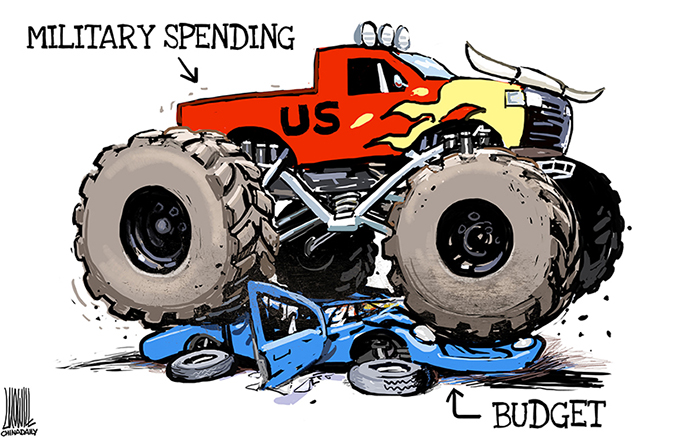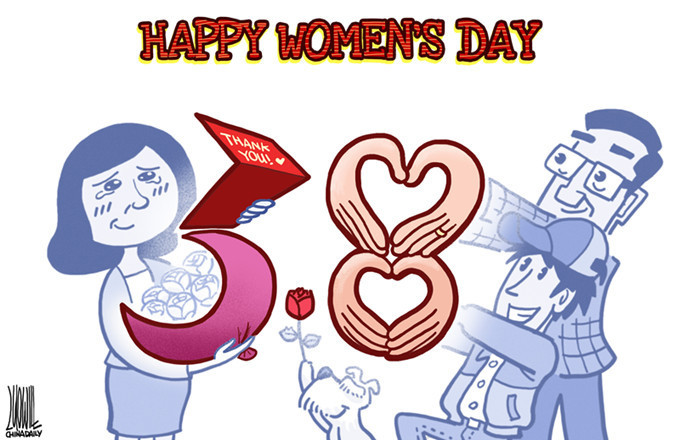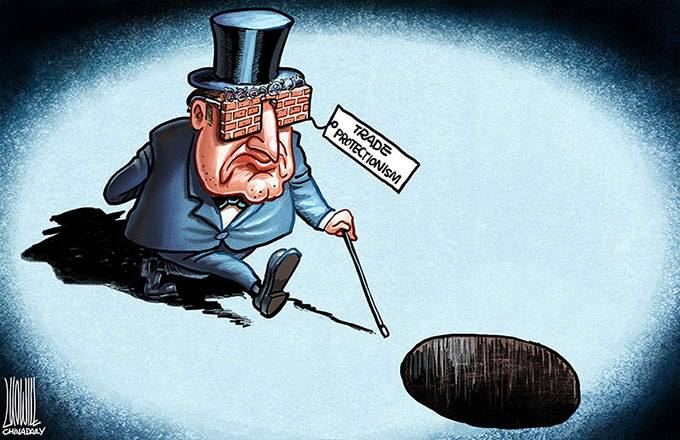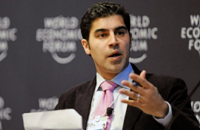Human rights record of the United States in 2016
III. Grim Living Conditions of Low-and Middle-income Americans
In 2016, the U.S. social polarization became more serious, with the proportion of adults who had full-time jobs hitting a new low since 1983 (www.gallup.com, September 20, 2016), income gaps continuing to widen, the size of middle class reaching a turning point and beginning to shrink (bigstory.ap.org, May 12, 2016), and living conditions of the lower class deteriorating.
Income gaps continued to widen. On May 17, 2016, the website of The Guardian reported that the U.S. top 500 chief executive officers (CEOs) earned 340 times the average worker's wage in 2015. Adjusted for inflation, wages of ordinary workers remained stagnant for 50 years. (www.theguardian.com, May 17, 2016) The businessinsider.com revealed that while CEOs of the 350 largest U.S. companies grew by about 940 percent from 1978 to 2015 after adjusting for inflation, the typical worker's pay grew just 10 percent over that time (www.businessinsider.com, August 15, 2016). The website of the Wall Street Journal reported that over the past 30 years, nearly 70 percent of incomes went to the 10 percent richest Americans, which was called the most astonishing "economic achievement" in recent years by The Time sarcastically (www.newser.com, December 8, 2016).
The middle class shrank.
The Wall Street Journal reported that 92 percent of people born in 1940 earned more at 30 years old than their parents did when they were the same age. However, for people born in 1980, that percentage dropped to 51. (www.newser.com, December 8, 2016) According to consulting firm Gallup, the percentage of Americans who said they were in the middle or upper-middle class had fallen by 10 percentage points, from an average of 61 percent between 2000 and 2008 to 51 percent in 2016. That drop meant 25 million people in the United States fared much worse in economic terms. (www.gallup.com, September 20, 2016) According to a Pew Research Center report released on May 11, 2016, the American middle class was no longer the majority at nearly 25 percent of large cities (bigstory.ap.org, May 12, 2016). From 2000 to 2014, the share of adults living in middle-class households fell by 4 percentage points nationally, and declined by 6 percentage points or more in 53 metropolitan areas (www.pewsocialtrends.org, May 11, 2016). A Pew survey showed 62 percent of 1,500 surveyed adults said the government had not cared enough about the middle class (www.pewsocialtrends.org, February 4, 2016).
Low-income and poverty population lives deteriorated. One in seven Americans, or at least 45 million people, lived in poverty (www.dailymail.co.uk, September 10, 2016). A Pew survey showed 49 percent of Americans said they could not make ends meet; 42 percent said they managed to strike a balance between incomes and expenditures (www.pewsocialtrends.org, February 4, 2016). By the end of 2015, homeless people stood at about 500,000 (www.theatlantic.com, February 11, 2016). The number of homeless people surged in large cities. There were more than 60,000 homeless people in Wisconsin (www.usatoday.com, October 16, 2016). Thousands of low-income people in industries including fast food, home care and airport went on strike repeatedly for the minimum wage standard of 15-U.S.-dollar per hour (www.theguardian.com, November 21, 2016). Life expectancy dropped. Life expectancy in the United States in 2015 declined for the first time in more than two decades, according to data released by the National Center for Health Statistics on December 8, 2016. Life expectancy for men fell from 76.5 years in 2014 to 76.3 in 2015, while that for women decreased from 81.3 to 81.2. Overall life expectancy dropped from 78.9 to 78.8 years (www.bbc.co.uk, December 8, 2016). At the same time, suicide rate in the United States rose. The Centers for Disease Control and Prevention reported that there were 41,149 suicides in the United States in 2013, up by about 41 percent from 1999. Suicide was the tenth leading cause of all deaths in the United States in 2013, claiming twice as many lives than homicide (www.bls.gov, December 2016). In 2015, the suicide rate in the United States surged to its highest level in almost three decades (www.bbc.co.uk, April 22, 2016).
Health conditions declined. For U.S. residents, self-reported health status had fallen among each age group between 25 and 59 since 1990, according to a report from Gallup. The share of the working-age population suffering from a disability that prevented them from working rose from 4.4 percent in 1980 to 6.8 percent in 2015, adjusting for age. That situation was related to the exorbitant costs and weak efficiency of the U.S. health system (www.gallup.com, December 15, 2016). The convoluted and opaque system of paying for prescription drugs enabled executives of drug companies to set extraordinary prices on modest medicines that had been around for years, and some companies even used free coupons for patients to raise drug prices by 10 times, the Chicago Tribune reported on December 6 (www.chicagotribune.com, December 6, 2016).
Social security system was seriously flawed. The Des Moines Register reported that there were 1,136,849 applicants of federal disability benefits on the waiting list, which meant they could wait up to 26 months to get an administrative-law hearing on their claim for benefits (www.desmoinesregister.com, December 25, 2016). Statistics released by the singlemotherguide.com showed only 22.4 percent of the single mothers who had been laid off or looking for work received unemployment benefits in the United States (singlemotherguide.com, September 17, 2016). CNN reported that 16 state prison systems in the United States had no formal procedure to enroll prisoners in Medicaid as they reentered the community. The story said nine states had only small programs in select facilities or for limited groups of prisoners. It went on to say that these 25 states collectively release some 375,000 inmates each year. The CNN report also said two-thirds of the 9,000 chronically ill prisoners released each year by Philadelphia' s jails were not getting enrolled as they left (edition.cnn.com, December 12, 2016).
- China issues report on US human rights
- Peace is fundamental premise, foundation for human rights protection: Chinese diplomat
- Work together to promote and protect human rights
- A Comparative Study on Human Rights Development Approaches in China and U.S.(Special Issue No.48 2016)
- West's perspective on human rights not the only one
- Global human rights development demands equal exchanges
- China-Germany forum on human rights development held in Beijing
- Survival, development are basic human rights: Xi





















